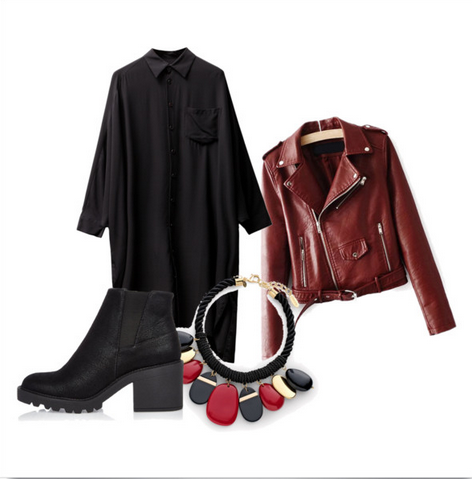A few fashion tips to let your “personality” style shine through this fall season
Developing a personal style seems easy enough. It begins by pairing that shirt you saw plastered all over Instagram with your favourite pair of distressed skinny jeans, and slipping into those pearly-white Adidas running shoes—until you step outside and realize you can’t tell yourself apart from the five other people wearing the exact same outfit.
Don’t panic or sprint to the nearest fast-fashion outlet for the latest piece you’ll wear once. Instead, think about what you would wear if trends weren’t constantly changing— if you could embody your personality in an outfit. What would you choose to wear if you were to express elements of your personality through your clothes?
Here are some ideas of how to transform fleeting fall fashion into autumn celebrations of self.
1. Self-expression doesn’t have to break the bank
“If [a piece] is $300 or $5, it might not always fit right,” says Laura Endacott, a fine arts professor who teaches fashion history at Concordia. To minimize expensive clothing costs, Endacott says having items tailored to fit properly is sometimes overlooked, but necessary to maximize a wardrobe. “You can buy [clothes] and spruce them up [by] tailoring them to [your] body type,” she says. Endacott also encourages the ecological and typically cheaper concept of thrifting.
2. Fashion or Function? The choice is yours
According to Endacott, “the body is the sight for many things.” Someone’s personal style may be expressive of the current values of their time or linked to an activist movement—like the hippie, flower power years of the 1960s to the 1970s punk age.
However, not everyone is looking to make a bold statement with the way they dress. Endacott acknowledges fashion as a celebration of self, but also a functional medium, depending on personal preferences. In other words, you could streamline your wardrobe into a collection of functional pieces, as long as you enjoy what you are wearing.
As a communications student at Concordia, the founder of the menswear fashion blog, Style Attorney, and the owner of a custom made suit business, Claudiu Pascalau advocates a reductive eye when it comes to selecting clothing.
“Less is more in fashion,” says Pascalau. He describes personal style as a “way of expressing yourself,” and an interaction with the rest of the public and their tastes. As a menswear blogger, he finds himself in the same predicament many of us do: seeing many different styles that he wouldn’t necessarily wear to express himself, but can appreciate.
3. Don’t forget about classic items that have left us with lasting impressions
Pascalau encourages everyone to find brands or styles they never get tired of wearing. By taking the time to discover the multitude of clothing, footwear and accessories available, you’ll soon find your method to manage quick-changing fashion trends.
Endacott advocates building up a wardrobe with classics that have remained in style since their inception, like the little black dress and well-tailored pieces. Pascalau also suggests going for solid colours and good-quality jeans, so when the infamous ‘I have nothing to wear’ mood strikes, you’re well equipped with basic pieces.
